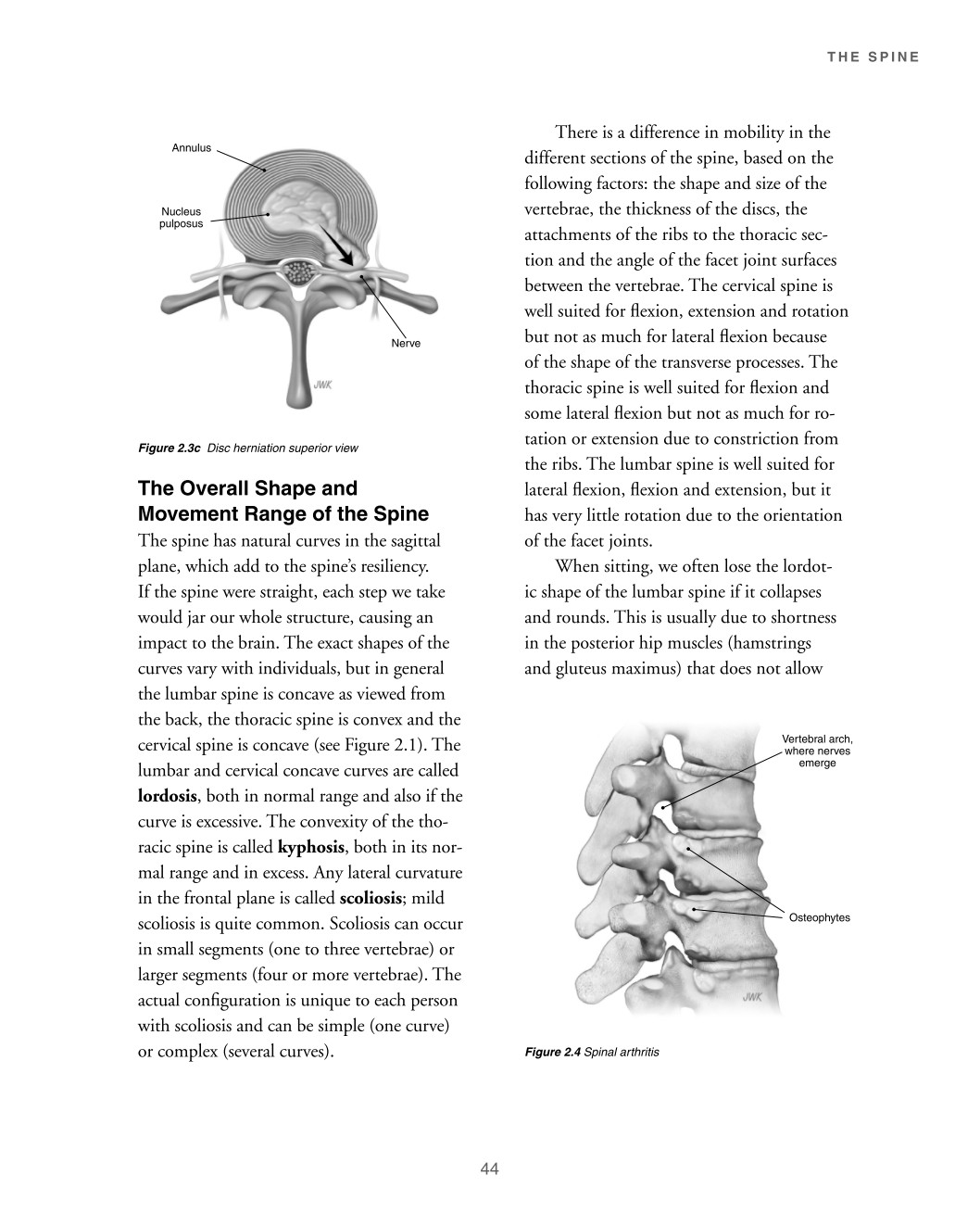

THE SPINE
There is a difference in mobility in the Annulus Nucleus pulposus Nerve Figure 2.3c Disc herniation superior view The Overall Shape and Movement Range of the Spine The spine has natural curves in the sagittal plane, which add to the spine’s resiliency. If the spine were straight, each step we take would jar our whole structure, causing an impact to the brain. The exact shapes of the curves vary with individuals, but in general the lumbar spine is concave as viewed from the back, the thoracic spine is convex and the cervical spine is concave (see Figure 2.1). The lumbar and cervical concave curves are called lordosis, both in normal range and also if the curve is excessive. The convexity of the tho- racic spine is called kyphosis, both in its nor- mal range and in excess. Any lateral curvature in the frontal plane is called scoliosis; mild scoliosis is quite common. Scoliosis can occur in small segments (one to three vertebrae) or larger segments (four or more vertebrae). The actual configuration is unique to each person with scoliosis and can be simple (one curve) or complex (several curves). different sections of the spine, based on the following factors: the shape and size of the vertebrae, the thickness of the discs, the attachments of the ribs to the thoracic sec- tion and the angle of the facet joint surfaces between the vertebrae. The cervical spine is well suited for flexion, extension and rotation but not as much for lateral flexion because of the shape of the transverse processes. The thoracic spine is well suited for flexion and some lateral flexion but not as much for ro- tation or extension due to constriction from the ribs. The lumbar spine is well suited for lateral flexion, flexion and extension, but it has very little rotation due to the orientation of the facet joints. When sitting, we often lose the lordot- ic shape of the lumbar spine if it collapses and rounds. This is usually due to shortness in the posterior hip muscles (hamstrings and gluteus maximus) that does not allow Vertebral arch, where nerves emerge
Osteophytes
Figure 2.4 Spinal arthritis
44